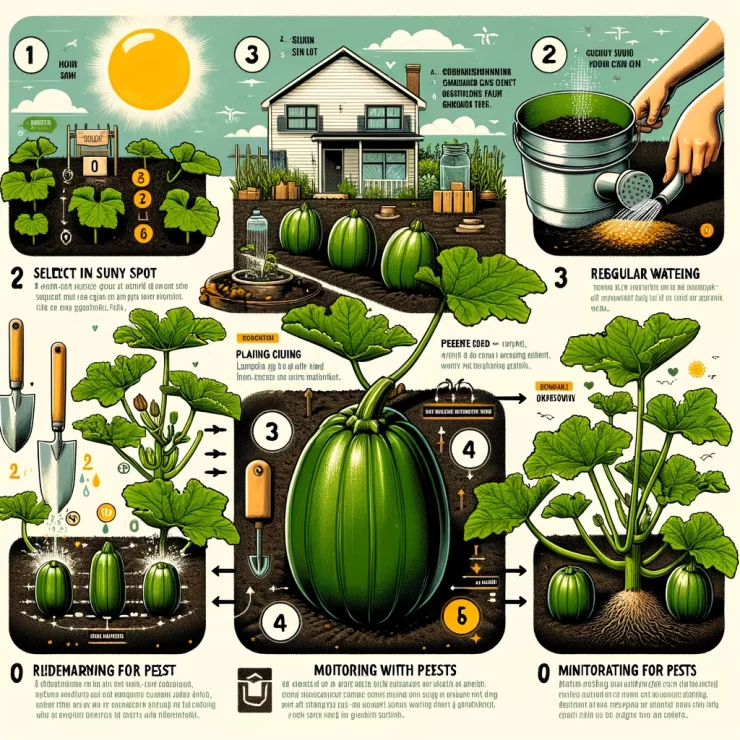Courgettes, also known as zucchinis in some parts of the world, are a versatile and delicious vegetable that can be grown with relative ease in home gardens. With their mild flavor and tender texture, courgettes are a favorite in many culinary dishes, making them a popular choice for home gardeners looking to grow their own produce. If you’re considering cultivating courgettes in your garden, this comprehensive guide will provide you with all the information you need to ensure a successful harvest.
Choosing the Right Variety:
Before you begin cultivating courgettes, it’s important to choose the right variety for your garden. There are several different types of courgettes available, each with its own unique characteristics. Some popular varieties include:
Black Beauty: This classic variety produces dark green courgettes with a rich flavor.
Yellow Crookneck: Known for its distinctive yellow color and curved shape, this variety is prized for its flavor and texture.
Costata Romanesco: Characterized by its ribbed texture and nutty flavor, this heirloom variety is a favorite among chefs.
Eight Ball: This compact variety produces round, baseball-sized courgettes that are perfect for stuffing or grilling.
When selecting a variety, consider factors such as your climate, available space, and personal preference in terms of flavor and texture.
Preparing the Soil:
Courgettes thrive in well-drained, nutrient-rich soil. Before planting, prepare your garden bed by loosening the soil to a depth of at least 12 inches and incorporating plenty of organic matter, such as compost or aged manure. This will help improve soil structure and fertility, providing your courgette plants with the nutrients they need to thrive.
Planting:
Courgettes are typically grown from seeds, which can be sown directly into the garden or started indoors and transplanted once the danger of frost has passed. Plant seeds 1 inch deep and space them 18 to 24 inches apart in rows that are spaced 3 to 4 feet apart. If transplanting seedlings, be sure to handle them carefully to avoid damaging the delicate roots.
Caring for Your Plants:
Once your courgette plants are established, they require relatively little maintenance. Keep the soil consistently moist, watering deeply whenever the top inch of soil feels dry to the touch. Mulching around the base of the plants can help conserve moisture and suppress weeds.
Courgette plants are heavy feeders, so it’s important to fertilize regularly throughout the growing season. Apply a balanced fertilizer once a month or use a slow-release fertilizer according to the manufacturer’s instructions.
Harvesting:
Courgettes are ready to harvest when they reach a length of 6 to 8 inches and have a glossy appearance. Use a sharp knife or pruning shears to cut the courgettes from the plant, taking care not to damage the stem or nearby fruits.
Regular harvesting is key to promoting continued production throughout the growing season. Check your plants daily and harvest any courgettes that have reached the appropriate size.
Common Pests and Problems:
While courgettes are relatively easy to grow, they are susceptible to certain pests and diseases. Keep an eye out for common issues such as powdery mildew, aphids, and squash vine borers, and take appropriate measures to control them, such as using insecticidal soap or neem oil.
With their delicious flavor and versatility in the kitchen, courgettes are a rewarding crop to grow in your home garden. By choosing the right variety, preparing the soil properly, and providing adequate care, you can enjoy a bountiful harvest of fresh courgettes throughout the growing season. Follow the tips outlined in this guide, and soon you’ll be savoring the fruits of your labor in a variety of culinary creations. Happy gardening!






Add comment